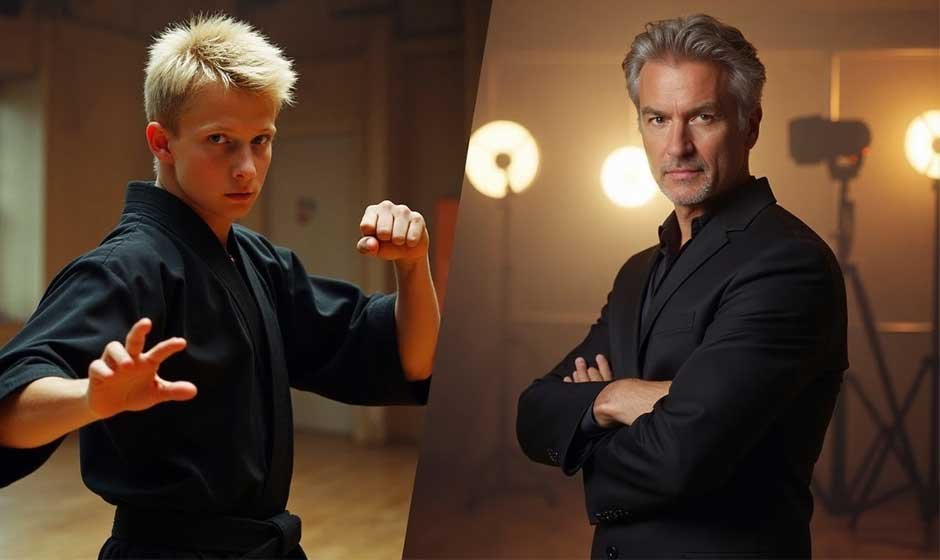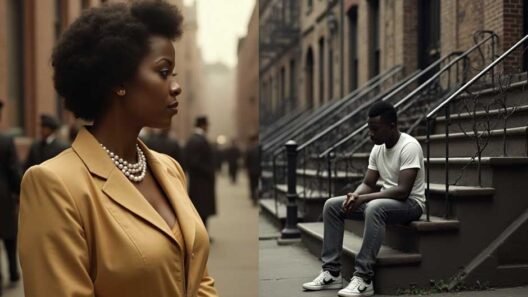William Zabka has built a remarkable $4 million net worth through his versatile career as an actor, writer, and director. His financial success started with his memorable role in “The Karate Kid,” which became a box office hit. The film earned $100 million in the US with just an $8 million budget.
The prominent actor’s wealth has grown by a lot since his comeback with “Cobra Kai.” His earnings reached $100,000 per episode during the first two seasons, which added up to roughly $1 million each season. His smart real estate moves have also paid off well. Zabka’s Burbank, California home, purchased in 1996 for $256,000, now holds a value close to $1 million. He expanded his property holdings with a $1.025 million home purchase in Brentwood, Tennessee during November 2020.
This piece traces Zabka’s complete financial experience from his early days as the unforgettable villain Johnny Lawrence to his current position as a successful television star and producer.
Early Life and First Steps in Acting
William Zabka was born in New York City on October 21, 1965. His path to becoming an iconic actor started in a family deeply rooted in entertainment. Before he built his substantial net worth, Zabka grew up surrounded by show business.
Family background in the entertainment industry
His father, Stanley William Zabka, made his mark as a director, writer, and composer. He worked on the Chuck Norris film “Forced Vengeance” (1982) and served as an assistant director on “The Tonight Show” during Johnny Carson’s early years. His mother, Nancy Heimert Zabka, worked as a business liaison, producer, and production assistant. Their roles went together with one another perfectly. Young William grew up with his siblings—brother Guy and sister Judy—who developed musical talents of their own.
Zabka’s father’s Czech and German heritage influenced his upbringing. He graduated from El Camino Real Charter High School in Los Angeles in 1983. After graduation, he briefly studied film at California State University, Northridge.
Landing his first TV role
Zabka’s acting career had humble beginnings. He shared a story about his first performance: “When I was a kid, my first acting job, at 5 years old, was a performance of ‘The Three Little Pigs’. They cast me as the Big Bad Wolf.” His early work included commercials for milk and M&Ms.
How he got cast in The Karate Kid
The script for “The Karate Kid” left Zabka doubtful about his chances. “When I read the Karate Kid script, as I turned the pages, I was like, ‘I’m never getting this part. He’s a black belt; I didn’t know karate,'” Zabka recalled. “He’s a motorcycle gang leader; I don’t know how to ride a motorcycle.”
His audition changed everything. He showed up to meet director John Avildsen wearing a headband and tank top, which captured the character’s intimidating presence. Zabka took a bold risk by physically grabbing the director to show his character’s aggression—a move that helped him land the role.
Though he had no karate experience, Zabka was already a skilled wrestler. The role sparked his interest in Tang Soo Do, and he earned a second-degree green belt after filming.
The Rise: 1980s Fame and Typecasting
William Zabka’s life changed forever when he portrayed Johnny Lawrence in “The Karate Kid” back in 1984. The 18-year-old actor shot to instant stardom, and this breakout role shaped his career path and affected his future earning potential by a lot.
Success of The Karate Kid and its cultural impact
“The Karate Kid” became a cultural phenomenon right after its release. The film raked in over $100 million domestically on an $8 million budget and ranked as 1984’s fifth highest-grossing film. Hollywood labeled it their biggest sleeper hit that year. The movie’s influence reached far beyond box office numbers and helped popularize karate across the United States. American pop culture vocabulary now included phrases like “sweep the leg,” which kept Zabka’s character fresh in people’s minds for decades.
Other notable 80s roles
Zabka’s newfound fame opened doors to several memorable roles. He played Greg Tolan in “Just One of the Guys” and appeared as Audrey’s boyfriend in “National Lampoon’s European Vacation” in 1985. The next year brought him alongside comedy legend Rodney Dangerfield in “Back to School” as Chas Osborne. He also returned as Johnny Lawrence in “The Karate Kid Part II” (1986). CBS’s “The Equalizer” (1985-89) gave him a chance to stretch his acting muscles as Edward Woodward’s son, where he played “a more straight good guy-type character”.
Challenges of being typecast
The massive success of the first two “Karate Kid” films came with a price. Zabka found himself typecast as the quintessential ’80s villain in teen comedies. Mainstream Hollywood’s offers started drying up toward the decade’s end. Looking back at this time, Zabka showed remarkable self-awareness. He approached his roles with depth, saying “I would always try to find something in the characters that was a weak spot, a chink in their armor, a vulnerability”.
Behind the Camera: Producing, Directing, and Awards
William Zabka is widely known for his acting roles, but his creative career took a most important shift behind the camera in the early 2000s. This change added to his net worth and artistic legacy.
Academy Award-nominated short film ‘Most’
Bobby Garabedian and Zabka began a mission in 2002 with minimal resources. They headed to Eastern Europe without a script, cast, or major budget to create “Most” (also titled “The Bridge” in some countries). The powerful 30-minute film was shot in the Czech Republic and Poland. It tells the story of a drawbridge operator who faces an impossible choice – save his son trapped in the bridge’s gears or prevent a trainload of passengers from dying.
The team faced tough challenges. They filmed in negative 11-degree temperatures on a Polish drawbridge. They also spent six months fighting with insurance companies over funding issues. Their hard work paid off when “Most” premiered at the Sundance Film Festival in 2003. The film got impressive recognition by winning Best of Festival at the Palm Springs International Festival of Short Films and the Crystal Heart Award at the Heartland Film Festival. Zabka’s work reached new heights in 2004 when “Most” earned an Academy Award nomination for Best Live Action Short Film.
Commercial directing work
Zabka brought his filmmaking skills to commercial production during his career transition. He directed ads for prominent brands like Little Tikes and Verizon while working at Heresy in Venice, California.
Music video direction and creative ventures
Zabka’s creative vision expanded into music video production. He directed and starred in No More Kings’ “Sweep the Leg” music video in 2007. The clever self-parody showed Zabka as a desert-dwelling recluse obsessed with his “Karate Kid” character. Original cast members Ralph Macchio and Martin Kove made cameo appearances. The video became a hit and reached YouTube’s #1 spot on March 16, 2007.
Country music group Rascal Flatts asked him to direct their 2010 hit “Why Wait.” He described it as “a spoof of the film ‘The Hangover'” with special appearances by David Arquette, Penn & Teller, Carrot Top, and Wayne Newton. His work with the group continued as he directed their 2017 video “Yours If You Want It.” These projects showed his versatility as a creative professional beyond acting.
Cobra Kai and the Financial Comeback
Zabka’s career took an amazing turn in 2017 when he returned as his iconic character Johnny Lawrence. This unexpected comeback became the life-blood of his net worth growth in his 50s.
How Cobra Kai was pitched and picked up
Zabka teamed up with Ralph Macchio and several producers to pitch a Karate Kid revival series in 2017. The team reached out to Netflix, Amazon, Hulu, and Apple with their concept. They presented it as a “redemption story” for Johnny Lawrence. Zabka remembers, “They pitched it as a redemption arc, but he would be rough around the edges and Johnny opens up Cobra Kai again”. YouTube Red (later YouTube Premium) picked up the series in August 2017.
Salary per episode and co-executive producer role
Zabka didn’t just act – he became a co-executive producer with Macchio. This dual role paid off well, as he earned about $100,000 per episode during the first two seasons. Each season had ten 30-minute episodes, which added up to roughly $1 million per season. His producer role let him shape the show’s direction and Johnny Lawrence’s character growth matched his vision.
Impact of Netflix deal on his net worth
The show struggled to find viewers on YouTube Premium. One source put it plainly: “unfortunately, low viewership because no one has YouTube Red… and no one wants YouTube Red”. Everything changed when Netflix bought the series in August 2020. The show found a much bigger audience and became one of Netflix’s most popular shows. This move to Netflix changed everything – the show went from being “an indie band” to having a “Broadway debut on Netflix”. The show’s success boosted Zabka’s finances by a lot, helping him build an estimated net worth of $3-4 million.
Conclusion
William Zabka’s trip from 1980s teen movie villain to respected filmmaker and rejuvenated television star is a remarkable Hollywood story. His current $4 million net worth shows decades of smart career moves and financial decisions. Zabka’s progress showed his exceptional versatility. He moved beyond typecast roles and became an Academy Award-nominated filmmaker.
Money didn’t come easy for Zabka. His original fame came from playing Johnny Lawrence, but typecasting became a challenge. He reinvented himself behind the camera. This move paid off through his work in commercials, music video direction, and film projects. On top of that, his property investments proved his business sense went beyond entertainment. His Burbank home, bought for $256,000, is now worth close to $1 million.
“Cobra Kai” without doubt changed Zabka’s financial path. Netflix picked up the show and his audience grew. His role as actor and co-executive producer substantially increased his income. He earned $100,000 per episode in early seasons, which added up to about $1 million yearly from the series alone.
Very few actors see such big career comebacks decades after their breakthrough roles. Zabka chose to embrace his iconic character instead of running from it. This decision brought his biggest financial reward yet. His story proves that persistence pays off in entertainment. It shows there are second chances in Hollywood careers. Once seen as just a one-dimensional villain, Zabka now enjoys creative satisfaction and financial security. His character’s redemption mirrors his own professional comeback.













